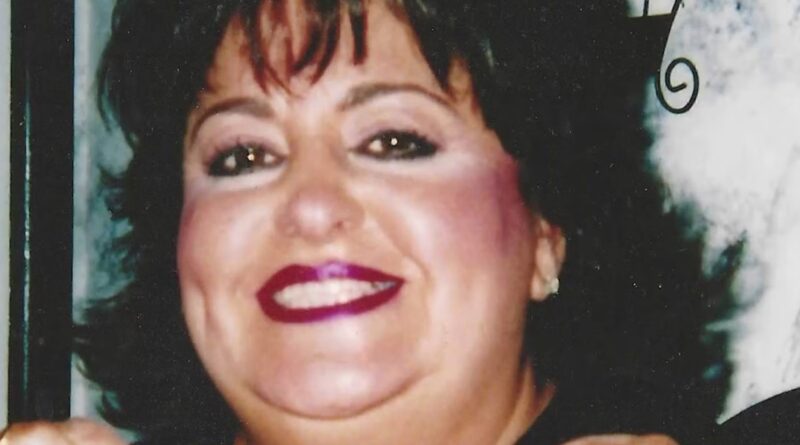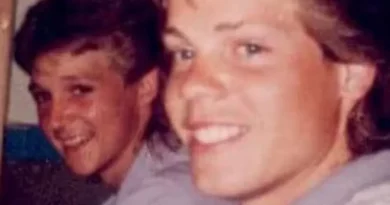JoAnn Romain Mysterious Suicide in Grosse Pointe Farms Michigan
JoAnn Matouk Romain was a 55-year-old mother of three living in the upscale community of Grosse Pointe Farms, Michigan. She came from the prominent Matouk family, known in local business and community circles, and she lived a life guided strongly by her Catholic faith. Those who knew JoAnn described her as kind, deeply devoted to her children, and active in her community. She frequently attended services at her local parish, St. Paul on the Lake Catholic Church, a historic church that sat just across the street from the cold, expansive waters of Lake St. Clair.
While JoAnn’s life appeared stable to outsiders, she carried private concerns about certain family dynamics and what some described as fears for her safety. In the years following her death, her children revealed that she occasionally mentioned being worried about threats or pressures from extended relatives. Whether these worries were grounded in reality or simply anxieties that weighed on her remains an enduring part of the mystery.
The Evening of January 12, 2010
On the frigid evening of January 12, 2010, JoAnn drove to St. Paul on the Lake Catholic Church for a prayer service. The temperature was below freezing, the ground covered with patches of ice and snow typical of Michigan winters.
The prayer service itself was brief, lasting no more than 20 minutes. Witnesses recalled seeing JoAnn in attendance, quietly praying before leaving the sanctuary around 7:15 p.m. She walked out of the church alone. Within minutes, she had vanished from view.
Her vehicle, a Lexus SUV, was later discovered parked in the church lot. Inside the car investigators found her purse and wallet—items most people would carry with them if they had intended to leave voluntarily. The keys were not missing, and nothing in the vehicle suggested a struggle. To many, it looked as though JoAnn had stepped out of the church, walked to her car, and then disappeared.
The Discovery of Footprints
When police arrived to investigate, they noted what they described as a set of footprints in the snow leading from the parking lot across the road toward the waterline of Lake St. Clair. According to their assessment, the prints appeared to move in a direct line toward the frozen shore, but no corresponding footprints were visible returning to land. To investigators, this seemed consistent with a person walking into the water and not coming back.
The assumption that JoAnn had entered the icy lake immediately influenced the course of the investigation. Search teams scoured the shoreline and waters near the church using divers, sonar, and boats. Despite days of effort, no body was found near the presumed entry point. For her family, this was the first red flag: if JoAnn had indeed stepped into the water near the church, why was her body not discovered there in the days or weeks that followed?
The Long Wait and Recovery of the Body
For more than two months, JoAnn’s family lived in torment, uncertain of her fate. Then, on March 20, 2010—68 days after she went missing—her body was recovered. It had surfaced in the Detroit River’s Livingston Channel near Amherstburg, Ontario, roughly 30 miles from where police claimed she had entered the water.
The distance between the supposed entry point and the location where her body was found only deepened the mystery. Currents could theoretically carry a body downstream, but the time lapse of over two months and the cross-border recovery fueled doubts about the initial drowning theory.
Authorities reported that JoAnn had no major signs of trauma beyond what might be expected from a body in water for weeks. The official explanation leaned toward drowning and suicide. However, her family insisted that she was murdered and that the evidence did not fit a straightforward suicide narrative.
Police Theory: A Likely Suicide
From the beginning, Grosse Pointe Farms police approached the case as a likely suicide. They based their assessment on the footprints in the snow leading toward the water, the lack of defensive injuries or a struggle near her car, and the discovery of her body in the water months later. Investigators concluded that JoAnn had walked into the icy waters of Lake St. Clair voluntarily, possibly overwhelmed by personal stress or depression.
To law enforcement, the absence of other forensic evidence pointing to an attack reinforced this interpretation. While unusual, suicides by drowning were not unheard of, and officers felt the circumstances aligned with such an act.
Family’s View: A Murder and a Cover-Up
JoAnn’s children and extended family rejected the suicide theory from the outset. They pointed to numerous inconsistencies:
- JoAnn had no history of depression or suicidal ideation.
- She had been looking forward to upcoming events and future plans with her children.
- Her purse and wallet left behind in her car seemed unusual for someone intending to take her own life, suggesting instead that she was interrupted or forcibly taken.
- The footprints that police relied on were never conclusively proven to belong to JoAnn.
- The idea of her crossing a busy, icy road in heels to walk into a freezing lake struck the family as implausible.
In addition, her children alleged that she had confided concerns about being harmed. They later filed lawsuits against police and local authorities, claiming negligence and suggesting the possibility of a cover-up. While the lawsuits were ultimately dismissed, the family has continued to speak publicly about their belief that JoAnn was the victim of foul play.
Legal Battles and Civil Suits
Following JoAnn’s death, her estate filed civil suits against Grosse Pointe Farms, the city of Grosse Pointe Woods, and individual officers. The suits argued that the investigation was mishandled and that evidence of potential homicide was ignored or covered up.
The cases wound through the courts for years. In 2019, the U.S. Court of Appeals for the Sixth Circuit affirmed the dismissal of the family’s claims. The court held that while the circumstances were suspicious, there was not sufficient evidence to prove deliberate wrongdoing or constitutional violations by the police. This decision closed the door on legal remedies for the Romain family, but it did not silence their calls for justice.
Media Attention and Public Interest
The strange circumstances of JoAnn’s disappearance and death attracted national attention. True crime podcasts, investigative journalists, and television programs, including the series Unsolved Mysteries, covered the case in detail. These programs gave platforms to JoAnn’s children, who argued passionately that their mother did not take her own life.
Media coverage highlighted the inconsistencies and raised broader questions about how local police handled the investigation. Was it simply a suicide in tragic circumstances, or was there a rush to judgment that obscured the truth?
Theories About What Happened
Over the years, three major theories have emerged:
- Suicide by drowning — The official theory, based on footprints leading to the lake, the absence of outward signs of struggle, and the recovery of her body downstream.
- Homicide staged as suicide — The family’s view, pointing to the suspicious circumstances, her supposed fears before death, and the improbability of her willingly walking into the lake.
- Accidental death involving third parties — Some have speculated that JoAnn may have been abducted or confronted after leaving church, with her body later placed in the water to simulate a drowning.
Each theory reflects different interpretations of the same sparse set of facts.
The Enduring Mystery
Today, more than a decade later, the death of JoAnn Matouk Romain remains unresolved in the eyes of many. Official records list her case as a probable suicide by drowning, yet her family and many in the community remain unconvinced. The distance between her disappearance site and her body’s recovery location, the unanswered questions about footprints, and her family’s insistence on her state of mind all contribute to an enduring air of mystery.
For JoAnn’s children, the fight continues. They have sought new reviews of the evidence, pushed for additional investigations, and kept her story alive in the media. Their campaign is not just about solving the riddle of what happened that cold January night, but also about preserving her memory as a mother, sister, and friend.
Conclusion
The disappearance and death of JoAnn Matouk Romain on January 12, 2010, in Grosse Pointe Farms, Michigan, is a haunting case of uncertainty. Whether suicide, homicide, or something in between, her story has touched countless people who continue to ask difficult questions. More than a mystery, it is a tragedy of a woman whose life ended under circumstances still clouded by doubt.
Until definitive answers emerge, her case will remain one of the most enigmatic and debated in Michigan’s history, symbolizing both the difficulty of piecing together truth from fragments and the undying commitment of a family determined to seek justice.
Discover more from City Towner
Subscribe to get the latest posts sent to your email.




